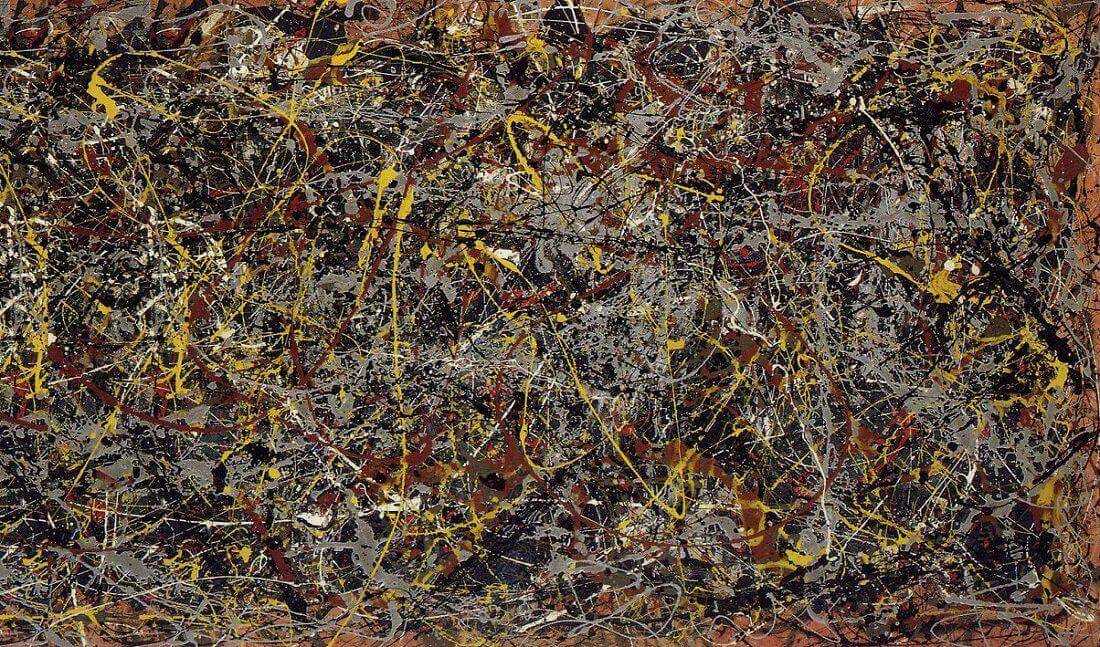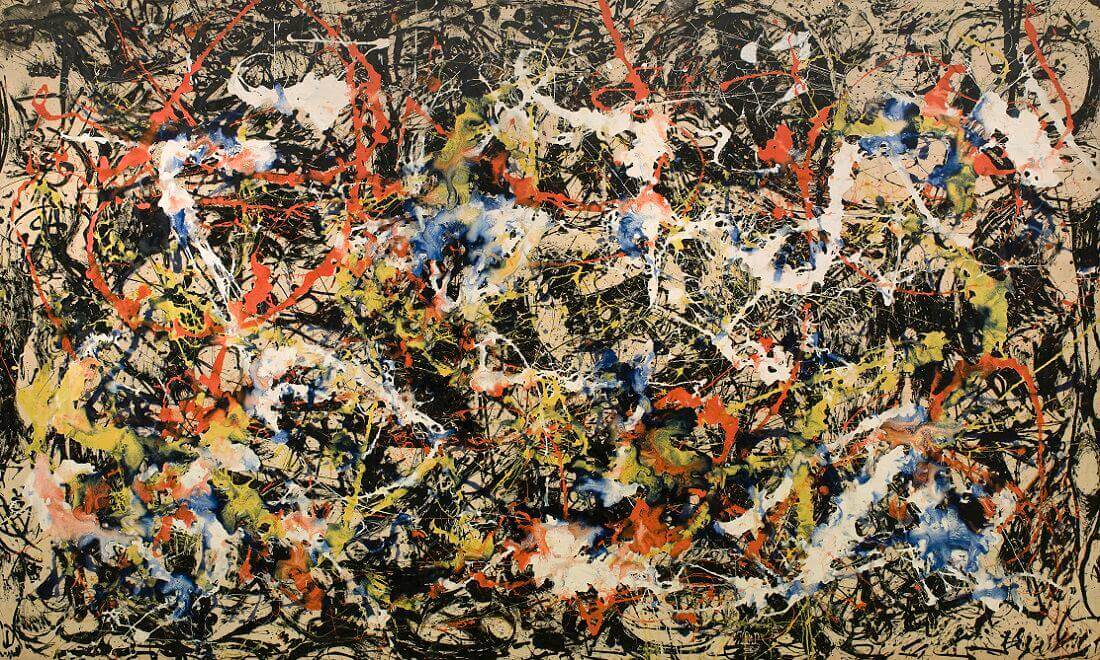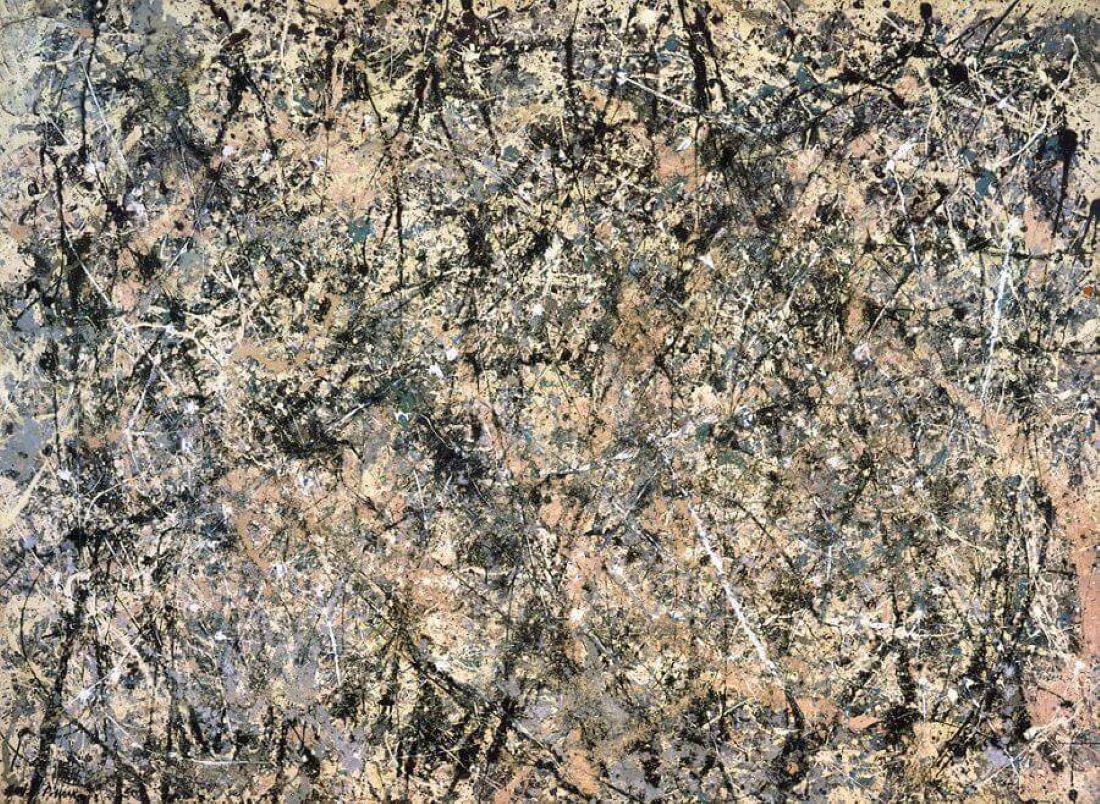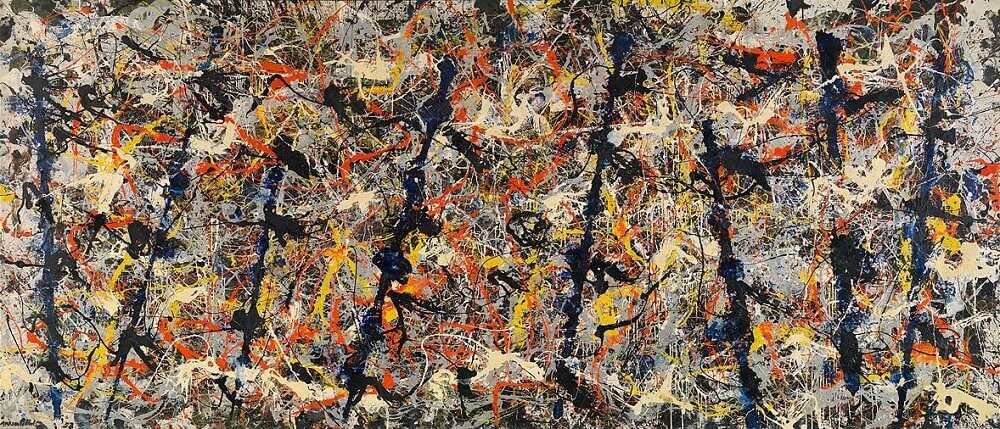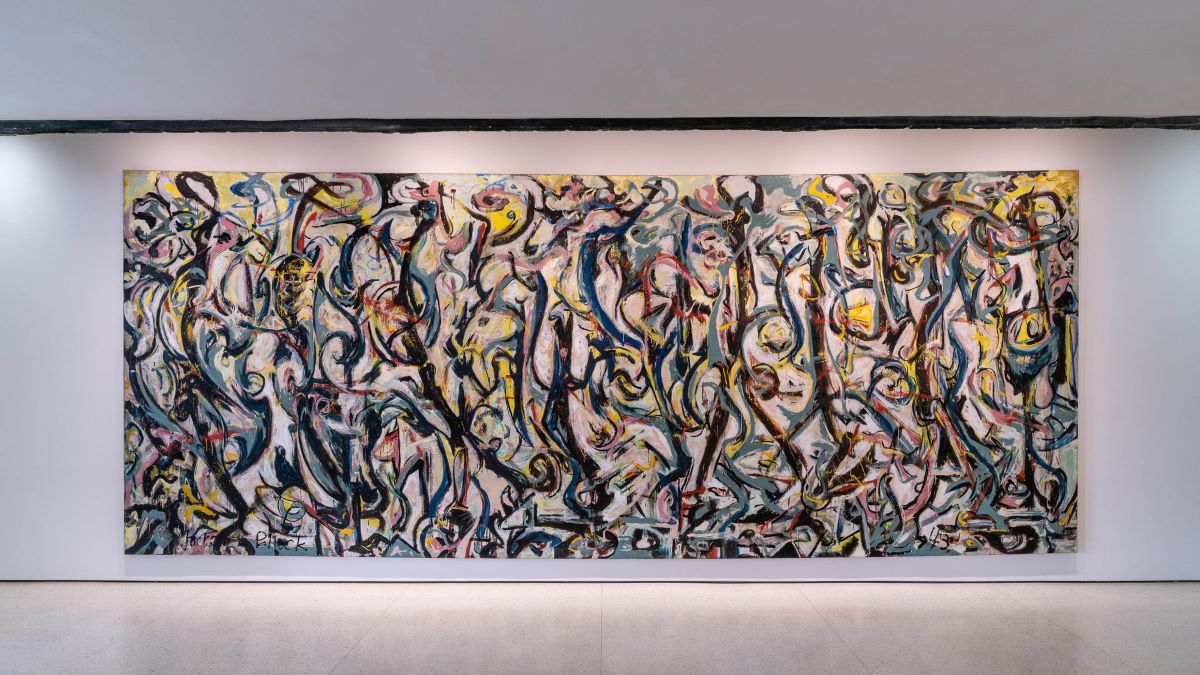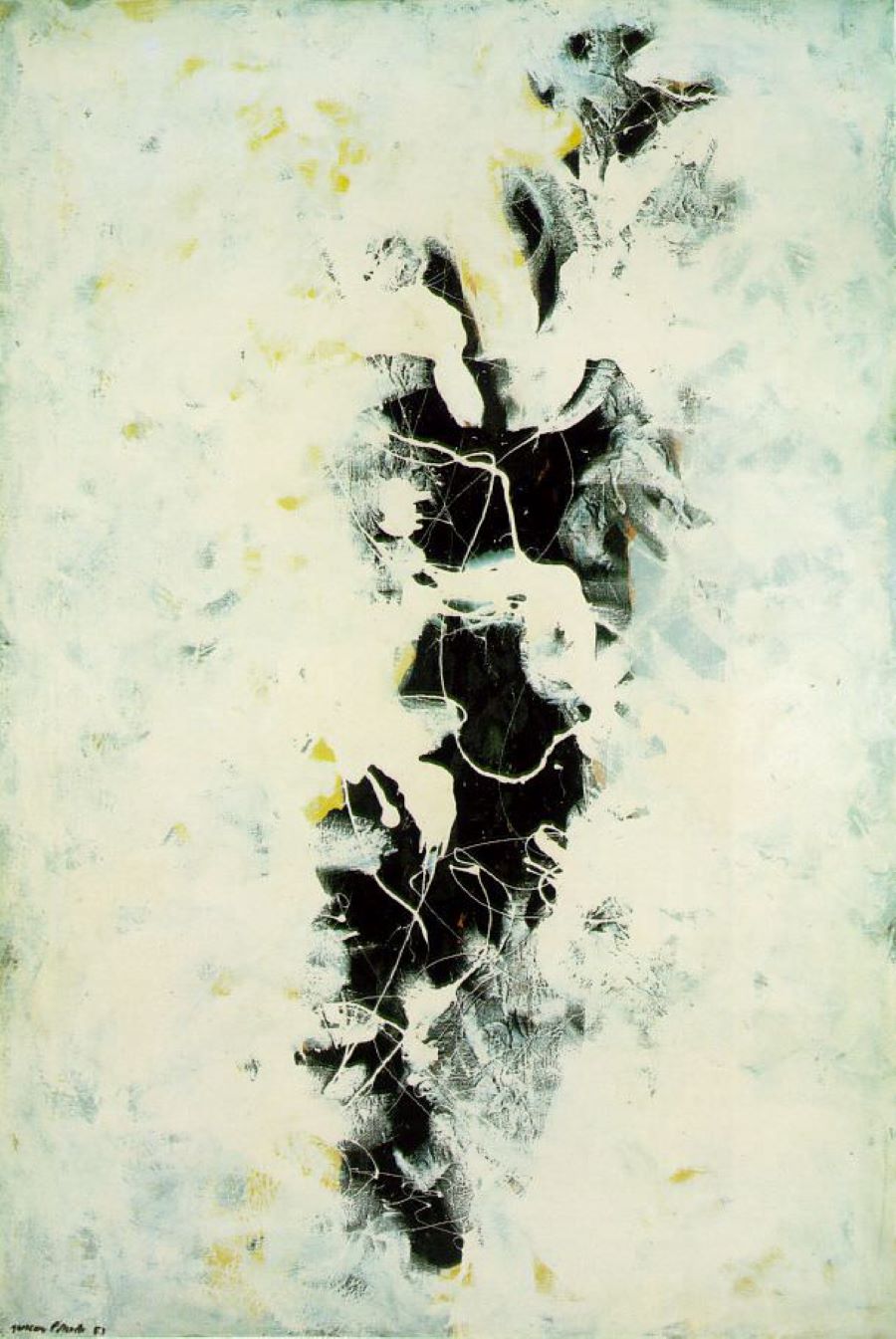Jackson Pollock’s 10 Most Famous Paintings You Should Know
When it comes to abstract art, art lovers cannot help but mention the name of the famous artist Jackson Pollock. In 1956, Time magazine derisively nicknamed him “Drip Jack.” However, just a decade later, Jackson Pollock was considered one of the most important artists of the action-painting movement within American Abstract Expressionism.
He breathed life into works of art and transformed colors with lines into unique masterpieces. In this article, let's enjoy Jackson Pollock’s 10 most famous paintings.
No. 5, 1948
No. 5, 1948 created on an 8-foot-by-4-foot sheet of fiberboard, the painting features a dense web of splattered and dripped paints.
Pollock utilized the paint in an unorthodox manner, laying the fiberboard flat on the ground. He uses sticks, hardened brushes, and even his hands to pour, drip, splatter the paint. The result is an artwork without a focal point, so viewers should explore every inch of its surface.
The meaning of No. 5, 1948 remains open to interpretation. Some have likened its tangled patterns to a bird's nest, while others see it as a visual representation of raw emotion and subconscious thought. Looking at the painting, you can feel a deeply personal experience for each viewer.
In 2006, No. 5, 1948 reportedly sold for $140 million in a private transaction. This record price make it one of the most expensive paintings ever sold at the time.
Convergence (1952)
Convergence (1952) is a large-scale work - 93.5 x 155 inches. You will be impressed immediately by the bold interplay of colors and layered patterns.
In Convergence, the use of vibrant hues - red, blue, yellow, and black - creates a striking contrast against the white backdrop.
The painting has been interpreted as a celebration of freedom and creativity. Some art historians view it as a response to the political tensions of the Cold War era. Pollock’s experimental style symbolized the cultural and intellectual freedom of the West.
Autumn Rhythm (Number 30), 1950
Autumn Rhythm (Number 30)'s title suggests a connection to nature and seasonal transitions. Its composition is dominated by a palette of black, white, and earthy tones - the colors of autumn.
Many viewers interpret the painting as an abstract representation of the energy and change associated with autumn.
This work is a testament to Pollock's innovative approach to art, rejecting traditional forms and focusing instead on the process of creation.
Lavender Mist (Number 1), 1950
Despite its name, Lavender Mist contains little lavender. Few people know that the title was given by art critic Clement Greenberg.
The dominant palette are whites, blacks, grays, browns, blues, and a hint of pink. These colors interact to create a luminous effect, evoking an ethereal mist enveloping the canvas. Pollock achieved this effect by applying paint using unconventional tools, such as sticks and trowels.
Lavender Mist's intricate patterns and rhythmic flow convey a sense of unrestrained creativity while maintaining a surprising harmony.
Blue Poles (Number 11), 1952
Blue Poles (Number 11), 1952 incorporates more structured elements than some of Pollock's earlier pieces. Measuring 82 x 195 inches, the painting is a monumental display of energy, abstraction, and balance.
The composition is characterized by bold, vertical blue lines (the "poles") that intersect with a dense network of dripped, splattered, and poured paint in a variety of colors, including yellow, black, orange, and white. These poles add a sense of structure to Pollock’s otherwise chaotic and dynamic style, creating a balance between order and spontaneity.
Blue Poles was initially met with mixed reactions, with some critics questioning its merit and others praising its boldness. The painting achieved international fame when it was purchased by the National Gallery of Australia in 1973 for $1.3 million, a record-breaking amount at the time. Today, it is widely recognized as one of Pollock’s masterpieces, reflecting both his artistic innovation and his emotional intensity.
Mural (1943)
Mural (1943) by Jackson Pollock is a groundbreaking work that marked a moment in transitioning from his earlier surrealist influences to the abstract expressionist style. Mural was Pollock's first large-scale work and helped him realize the potential of painting on a monumental scale. Mural was commissioned by the art collector and patron Peggy Guggenheim for the entrance hall of her New York City townhouse.
The composition is a dynamic explosion of swirling, flowing forms and bold, rhythmic lines that seem to dance across the canvas. Pollock used oil paint and casein, blending techniques to create vibrant textures and a sense of movement. The painting’s energetic forms suggest figures in motion, though they are abstracted into an almost chaotic interplay of shapes and lines.
The Deep (1953)
The Deep (1953) features a stark, almost minimalist composition dominated by white paint with areas of black and hints of yellow, creating a haunting, layered effect.
The painting’s title, The Deep, invites various interpretations. It has been seen as a metaphor for emotional depth, existential introspection, or the subconscious. The interplay of light and dark makes a sense of vastness. The white areas resemble light breaking through an abyss or void. Some viewers interpret it as a symbolic representation of Pollock’s struggles with his demons, as this period marked a time of turbulence in his life.
Pollock applied the paint in his characteristic gestural style but with more restraint than in his earlier works. The drips and splatters in The Deep are less dense, leaving significant portions of the canvas exposed. It is a departure from the all-over compositions of his earlier pieces.
Full Fathom Five (1947)
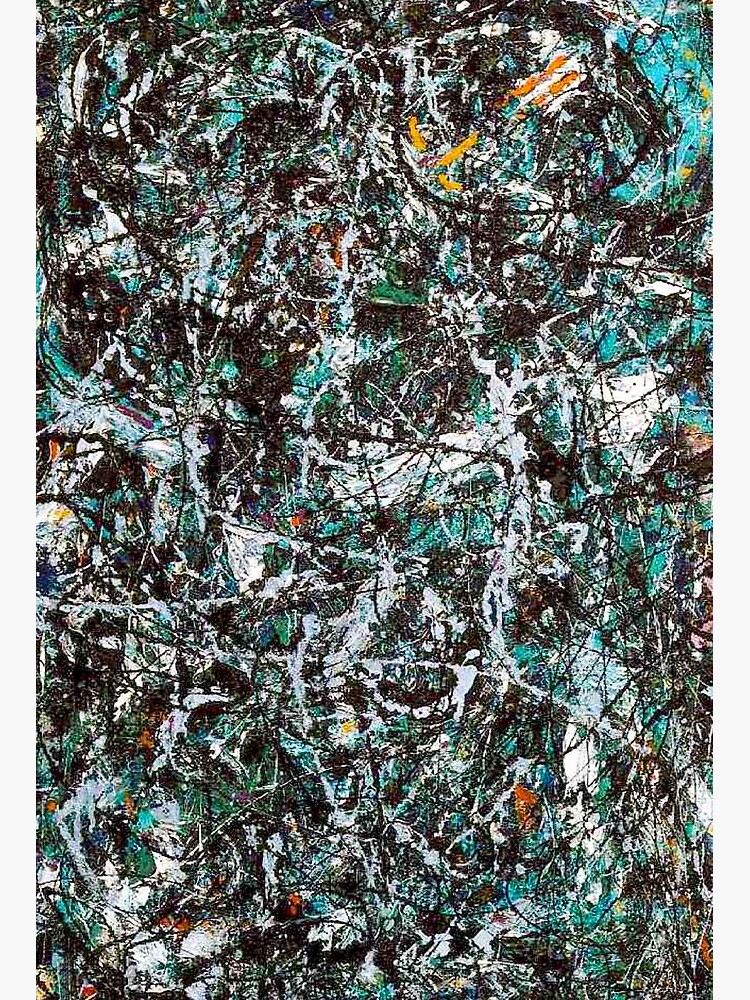
Full Fathom Five (1947) is one of Jackson Pollock’s earliest and most influential drip paintings.
The painting’s title is drawn from a line in Shakespeare’s The Tempest (“Full fathom five thy father lies…”). It expresses themes of transformation, death, and rebirth, adding a poetic resonance to the work. Beneath the surface, Pollock embedded unconventional materials, such as nails, thumbtacks, cigarette butts, and coins. These embedded objects show Pollock’s break from traditional artistic conventions.
Number 32, 1950
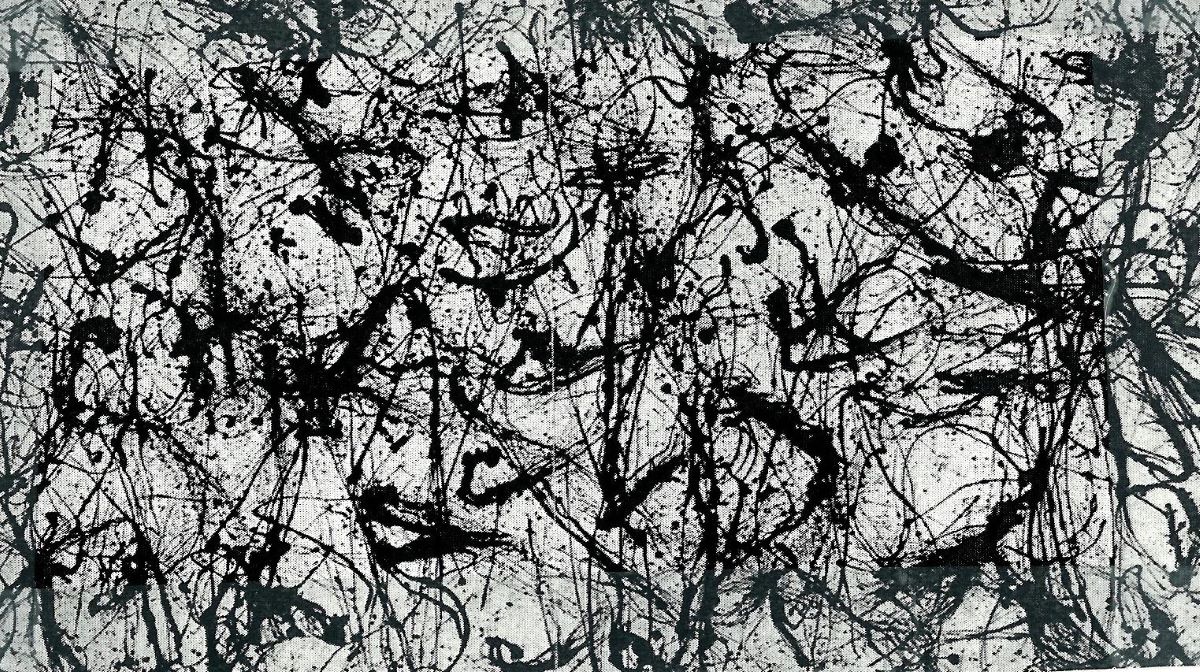
Number 32, 1950 is created during the height of Jackson Pollock’s artistic maturity.
In Number 32, 1950, Pollock achieved a striking balance between chaos and control. The painting is dominated by black enamel paint, with subtle variations in density and rhythm. Thin, sweeping lines intertwine with thicker, more pronounced drips, creating a dynamic interplay of movement and texture.
Echo: Number 25, 1951
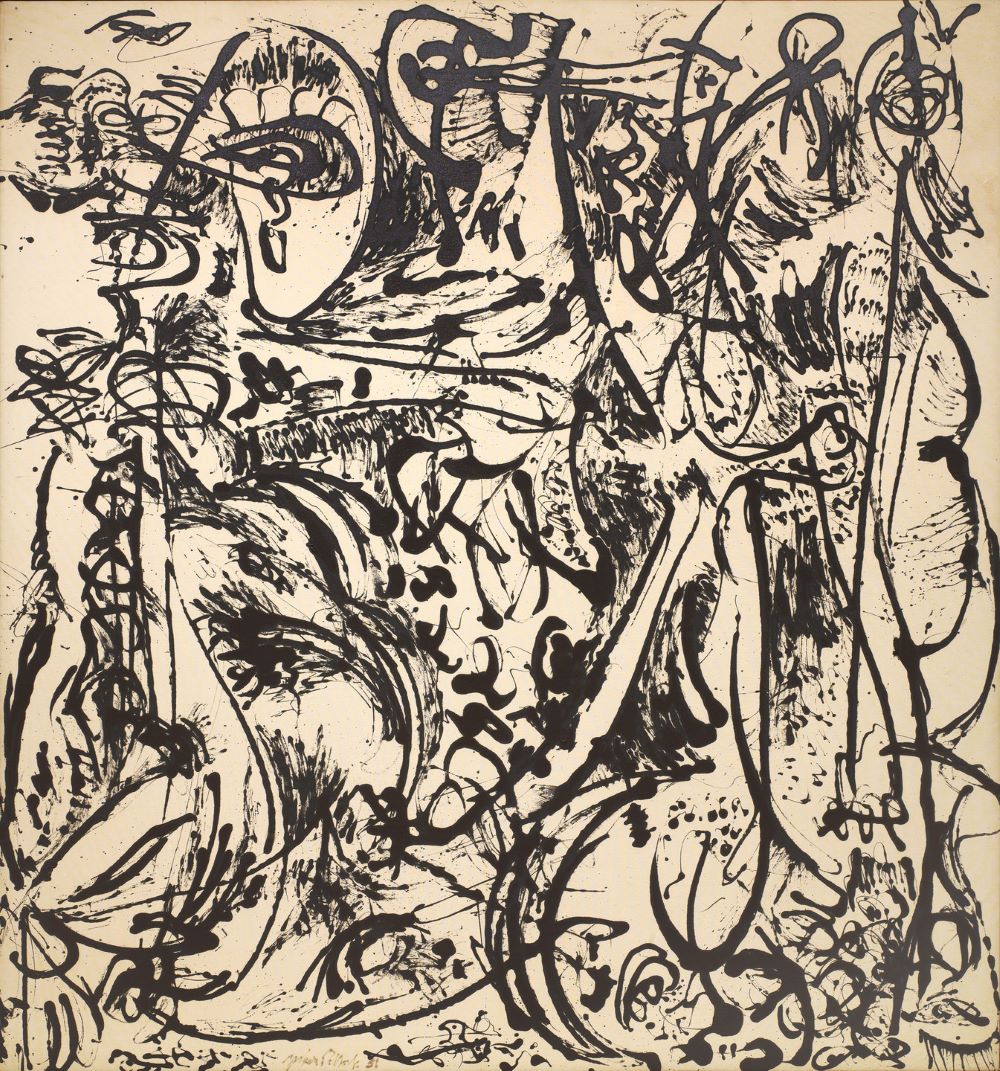
Echo: Number 25, 1951 exemplifies Pollock's shift toward a calligraphic and linear aesthetic. It sets off bold, sweeping gestures and a heightened sense of negative space.
In this work, Pollock’s characteristic energy remains, but the composition feels more controlled. The black lines seem to echo one another. It makes rhythmic patterns that suggest movement and vibration. The interplay between the stark black forms and the raw canvas surface adds to the visual tension.
Skilltrans introduces you to some courses that can be useful in art training. Please click on the course name below to learn more:
Drawing and Colouring: Birds and Flowers (Art as Meditation)
In this course you will learn to make beautiful leaves, flowers and exotic and beautiful birds which will not only enhance your painting.
Cartoon Drawing For Absolute Beginners
You will learn how to draw cute cartoon characters. Also, you will learn how to draw simple cartoon backgrounds. We’ll start with the basics. For example whats the anatomy of our cute cartoon characters and what shapes we’ll use to draw them. Then we’ll jump into different facial expressions so that you can express emotion with your characters. Also different hairstyles, a lot of practice sheets, and many more.
Character Art School: Complete Coloring and Painting
Whether you want to color and paint character concept art for films and games, illustrations, comics, manga, Disney style or other styles, this is the course you need to get you there.
You will know all the core theory, workflows and practical application for professional level Character Coloring and Painting.
Conclusion
We have seen Jackson Pollock's 10 most famous paintings. These works reflect Pollock’s inner complexities. Through works of art, Pollock expresses the cultural and existential anxieties of the postwar era.
To learn more timeless symbols of human creativity, you can register for Skilltrans courses. Many diverse courses are waiting for you to study.

Meet Hoang Duyen, an experienced SEO Specialist with a proven track record in driving organic growth and boosting online visibility. She has honed her skills in keyword research, on-page optimization, and technical SEO. Her expertise lies in crafting data-driven strategies that not only improve search engine rankings but also deliver tangible results for businesses.
